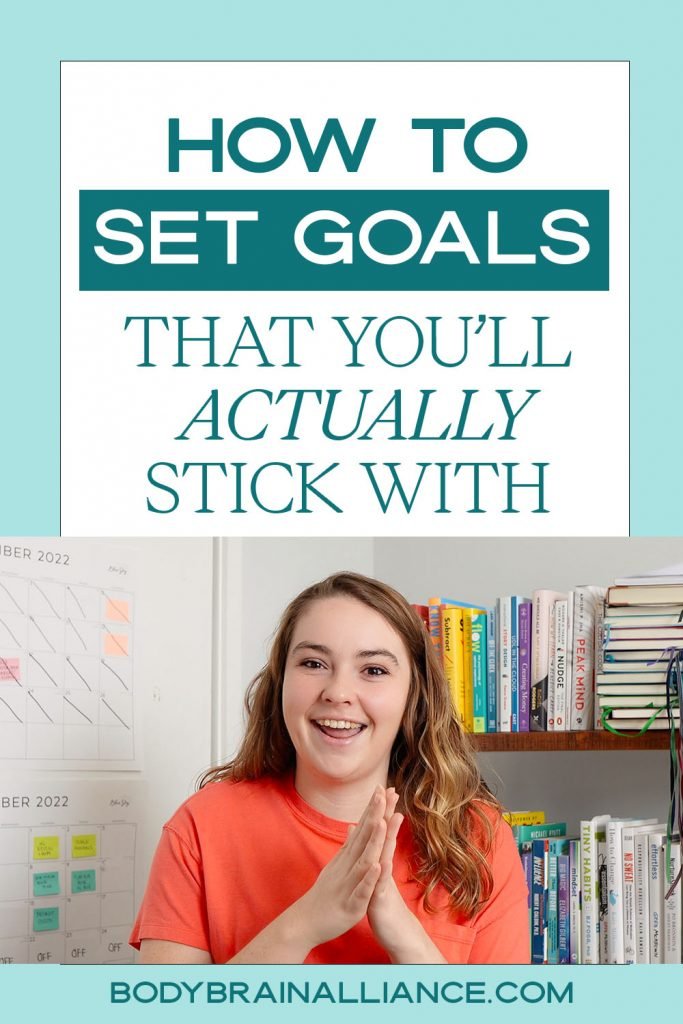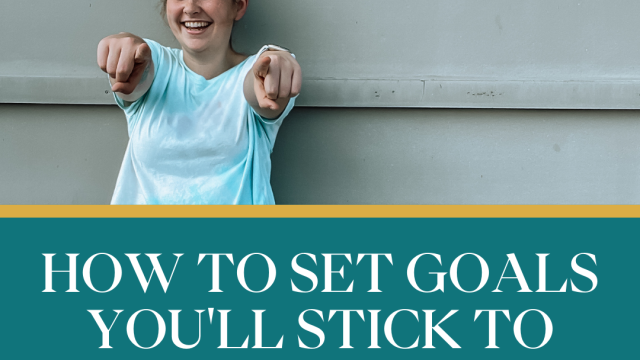3 Science-based Tips for Achieving Any Goal
We've all heard the statistic that 80% of New Year's resolutions fail, but what about the other 20%? What are those people doing differently that makes them so successful? How can you set goals you'll actually stick with? I can answer that for you.
If you want to set goals you’ll actually stick with, they can’t come from a place of self-hate.
This will be a little bit of a poke for some of you, but I see it all the time. We go home for the holidays, get triggered, and we start to feel some type of way about ourselves. Maybe you’re feeling bad about your finances, your body, your physical abilities, or how messy your house is.
You enter a mindset where you’re feeling down and guilty, so you set a goal to keep your house cleaner or lose weight or whatever. But these goals come from a place of self-hate, which is a big no-no in the world of behavior change.
Here’s the science behind that: there are two different types of motivation, autonomous motivation, and controlled motivation. One is far more effective than the other at helping you actually stick with and achieve your goals.
Controlled Motivation
Controlled motivation is when we do things because we feel like we have to in order to be “good.” Society tells us we have to look a certain way, have a certain amount of money, and keep our house a certain level of tidiness. Sometimes we react by setting goals from that negative mindset place. Ever notice how those goals never last for long? We can’t live up to impossible standards. Pretty soon we feel like we are drowning in a sea of expectations, overwhelm, and shame.
The problem is controlled motivation isn’t sustainable and your brain is programmed to run away from it. Your brain doesn’t want to be stuck in this place of self-hate all the time. So, of course, it’s going to change the circumstances so that you completely forget about that goal and don’t feel bad all the time. Problem solved, right? Wrong.
Autonomous Motivation
The alternative is to use autonomous motivation. This is a growth mindset technique focusing on visualizing what your future could look like if you achieve your goal. It allows you to approach your goals from a place of positivity, possibility, and empowerment. Sounds way better, doesn’t it? If you have a specific goal that you’re struggling to transform, let’s hear it! Drop it in the comments and I will show you how to set goals that you’ll actually stick with.
Pair your goals with a value.
Objective vs. Subjective Goals
Earlier this year, I set a goal to compete in my first powerlifting meet. I wanted to lift 600 lbs total across the three main lifts (squat, bench, and deadlift). Now, the goal I set in that case–600 lbs–was what we call an objective goal. It’s objective because everybody around me can clearly agree on whether or not I lifted 600 lbs.

Anytime you set an objective goal, you also want to balance it with a subjective goal. In order to actually stick with your goal, you need to understand why you want to achieve it. What value does it represent to you? For me, the goal of competing in a powerlifting meet represented feeling strong as hell.
A little over a month ago, I competed at my first powerlifting meet and lifted a total of 530 lbs. Now, had I only set the objective goal, I would’ve seen this as a failure. But because I knew I had also set a subjective goal, I checked in with myself. Did I feel strong, healthy, and empowered? The answer was absolutely YES! Even though I didn’t achieve the weight goal I had set for myself, I still felt extremely validated.
This is so important, especially if you’re a bit of a perfectionist or have a hard time dealing with failure. Ask yourself these questions:
-
- Even if I don’t achieve the exact goal, what subjective value am I trying to embody?
-
- Is there something subjective I can do that will still get me at least one step toward that value?
Plan for obstacles.
When setting a goal, most of us think, Ohmygosh, it’s gonna be so great! I’m so excited! I’m so motivated! And we race toward it at top speed. When we’re in that frenetic mental place, we forget that there are often obstacles between us and our goal. Those challenges can be difficult to overcome. We need to slow down and start anticipating those obstacles so that we can plan how to get past them successfully.
Identify potential barriers to your goals.
Let’s say, for example, that you’re setting a goal to keep your house tidier. You want that minimalist, totally clean, styled house that you’re seeing all over TikTok these days.
If that’s the case, I want you to ask yourself:
-
- What obstacles might I face on my way to that kind of cleanliness?
-
- What are the reasons that I haven’t gotten there already?
I know, for me, there are two main obstacles to my tidiness:
-
- Being in a rush
-
- Feeling overwhelmed by the whole mess, which drains my motivation to clean it up.

Rephrase your goals into positive action-based tasks.
Here’s how I might change my goal in order to account for those obstacles in my strategy. Instead of saying, I want to be tidier, I’d rephrase my goal as a specific habit like doing a daily five-minute reset. That accomplishes two things:
-
- Allows me to schedule the task into a time when things are the slowest so I won’t be in a rush.
-
- Reduces feelings of overwhelm by breaking the project into short five-minute tasks.
That’s just one example, but if you need 1:1 help to set goals you’ll actually stick with, I’m here! Put your questions in the comments and I’ll respond with some behavior change expert advice.
You might be thinking, Karin, this is great… but I can’t apply these tips yet. I don’t even know what my goals should be! I have so many, I don’t know which to focus on.
If that’s the case, sign up for my Future Self Mapping mini-course. This is a free resource that helps you decide exactly:
-
- What your goal is
-
- How it connects to your values
-
- What it looks like in terms of small daily habits or behavior changes
You can also subscribe to my YouTube channel, where I break this down further and serve science-backed tips that teach you how to set goals you’ll actually stick with.





